#old german literature
Text
Antisemitism in Krabat
Obviously I like the tale about Krabat a lot, including all it's retellings. And since i love it so much, I need to point out flaws in it so that it can be enjoyed in a more honest and reflective way plus allow people to make their own choices about interacting with old tales like it.
Jewish life in central-European regions like Lusatia faced somewhat continuous oppression and persecution. This antisemitic hatred is coded in literature as well, which shows up in the Krabat tale as an old tale carrying those rather classical antisemitic markers:
The antagonist is an evil black magic sorcerer who mistreats, kills and oppresses the otherwise as christian presented characters.
Vulnerable kids and young adults get recruited into the study of black magic. There is also the ritualistic killing of these kids by black magic for the benefit of the antagonist to prolong his life which is a version of the blood libel trope.
The first thing the antagonist teaches the protagonist Krabat is how to dry up a well. That is the antisemitic well poisoning trope.
The antagonist has a secret book called the Koraktor which is the invert of a regular book: it is black with white writing. In it are records on how to do black magic. In the context of the otherwise christian society it is noticeably marked as a bad book, drawing parallels to the depiction of the Tora by medieval Christians.
The antagonist uses his magical powers to be a secret political influence to a king, which leads to the as pointless and just out of evil desires portrayed continuation of a war. This fits the (international) jewish conspiracy trope of as jewish coded people or in this case characters just wanting to harm the good (christian) people out of no reason.
The antisemitic coded antagonist is shown to be greedy, never sharing his wealth with those he is expected to help out, which is another antisemitic trope. Also he orders his students to trick and lie to get him money.
I am sure there are more codes I missed since Antisemitism and both fear of and fascination for the occult go hand in hand in many more facets. Looking at the massive amount of fantasy literature with the same antisemitic tropes as Krabat (eg Harry Potter) it's clear that we need to keep looking at these pieces of literature to learn how to tell great stories without including harmful tropes.
#krabat#krabat and the legend of the satanic mill#antisemitic#kantorka#grimmreading#krabat spoiler#fairy tale#fairy tales#sorbian#sorbian literature#sorbisch#old german literature#german literature#krabat renaissance#otfried preußler
28 notes
·
View notes
Text
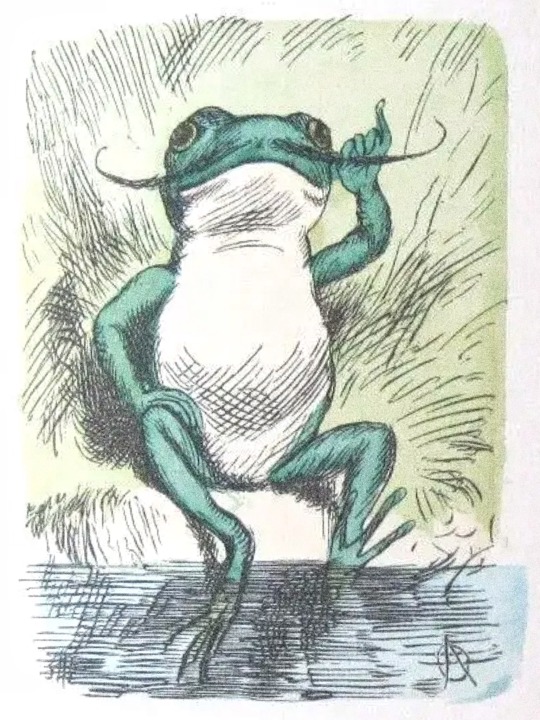
Münchener Bilderbücher
Verlag von Braun & Schneider
München
1878
Artist unknown
#kinderbuch#children's literature#children's illustration#children's books#vintage illustration#old illustration#frog#grenouille#german book
425 notes
·
View notes
Text
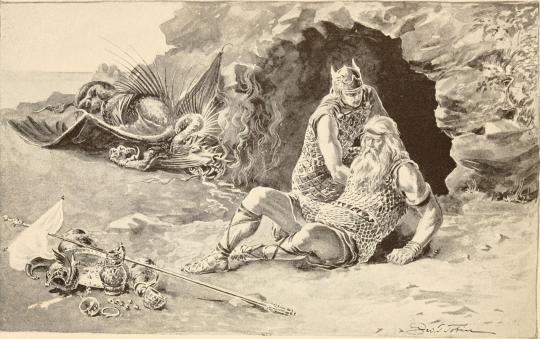
The dying Beowulf, having just defeated the dragon, is supported by his ally Wiglaf. Illustration by George T. Tobin from Siegfried, the Hero of the North, and Beowulf, the Hero of the Anglo-Saxons by Zenaide A. Ragozin, published in 1909. Now in the New York Public Library.
#art#art history#George T. Tobin#illustration#Beowulf#Germanic mythology#Old English#Old English literature#Middle Ages#medieval#medieval literature#American art#20th century art#New York Public Library
186 notes
·
View notes
Text
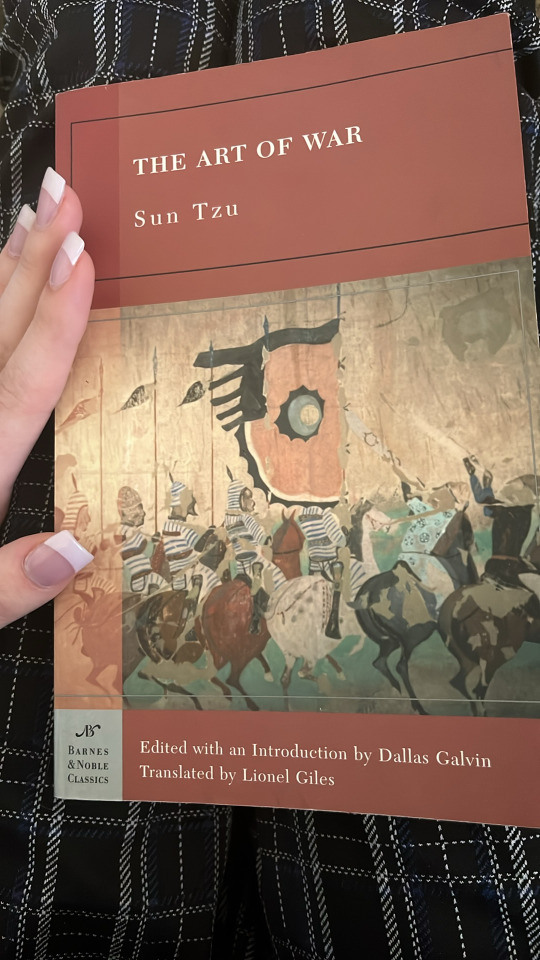
Who knew some thrift stores have a board book collection, some even featuring a classics section!
Check your thrift stores for books 📚
#book quotations#books and reading#old books#book quotes#book photography#book recs#bookworm#book review#book blog#book recs classic#books#books & libraries#libraries#academia#booklr#classic literature#french literature#light academia#dark academia#american literature#literature major#german literature#russian literature#student life#college life#literature#english literature#study aesthetic#writer stuff#study blog
20 notes
·
View notes
Text
Merseburger Spells

The Merseburg Spells or Incantations are two magic spells found in a Latin Sacramentarium and are written in Carolingian minuskel. The manuscript originates from the Abbey of Fulda, Germany and are dated around 800-900 AD, but only rediscovered in 1841.
The spells do not show any sign of Christian influence and are the only written proof of Germanic mythology in Old High German.
The first spell tells of prisoners of war which are freed by the Idisi. An unknown kind of god-like figures, possibly a Germanic version of Valkyries.
The second spell is a healing incantation. Wotan rides through the woods with Balder, until Balders horse named Phol gets hurt. Wotan, Friia (Freya), her sister Volla and Sinthgund and her sister Sunna sing to the horse; let your wounds be cured.
There are other version of the second spell known, but in different rhyming couplets and turned into a Christian motive.
English and Dutch speakers may identify most of the words without knowing the lyrics first.
Merseburger Domstiftbibliothek, codex 136, f85r
#germanic folklore#Germanic literature#old high German#fulda#merseburg#Merseburg spells#Odin#wodan#uuotan#norse mythology#germanic mythology#field archaeology#archaeology#linguistics#Viking mythology#balder#carolingian#Merovingian#Frisian#charlemagne#frankish
80 notes
·
View notes
Photo

Instead of preparing my Finals Presentation, i created a cover for the damn book instead. So anyways Franz Woyzeck, from Georg Büchner’s Woyzeck
#art#my art#digital art#flames#woyzeck#franz woyzeck#georg büchner#soldier#ivansbadart#fan art#i mean i guess#why am i in a 200 year old fandom?#the world may never know#literature#german literature#wozzeck#georg buchner#buchner#büchner#abyss#personal work#itsivan
20 notes
·
View notes
Text


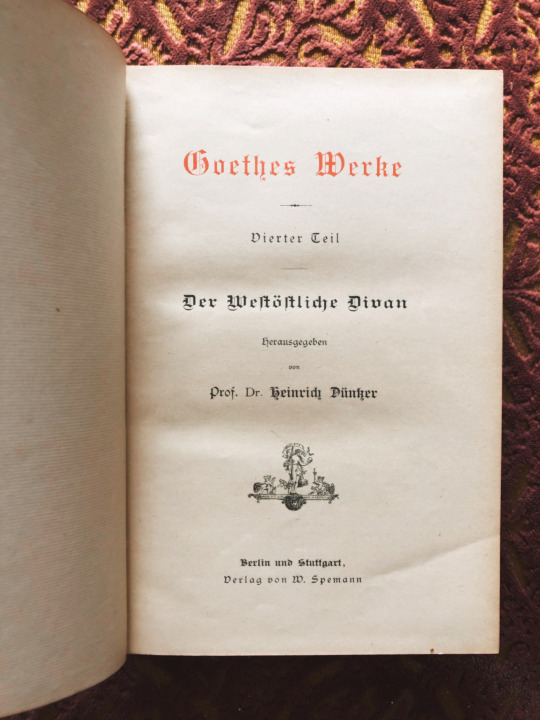
The "West-Eastern Diwan" by Goethe - A bridged beauty between Occident and Orient.
Published by Prof. Dr. Heinrich Düntzer, Berlin and Stuttgart, 1878.
It is said, that Goethe used the "oriental mask" to cover his pantheistic ideas, speaking trough the lips of the newly translated poets.
Next to the Hafez' poems, which where published and translated by the orientalist Joseph von Hammer, other literal and scientific sources were used as inspirational impact and to refine the tone of the great masters of Oriental poetry, like the academic achievements of Prof. Wurm, Prof. Paulus (Orientalist in Heidelberg), other translations of cultural impact like Rückert's "Östliche Rosen" (~ Eeastern Roses) the Mewlana-Transaltions of 1819 and the collection of August von Platen called "Ghaselen", Goethe corresponded with Boisserés and with one of the Grimm brothers.
Wilhelm von Humboldt praised the authencitiy of Goethe's work.
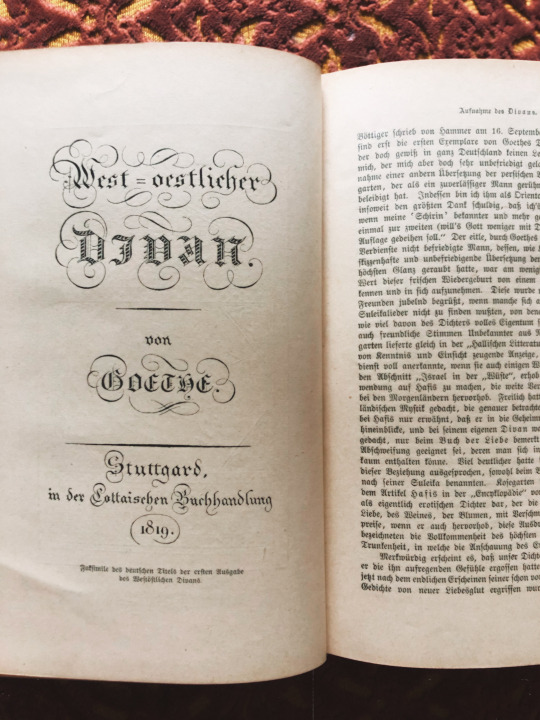

The "East-Western Diwan" is the last great cycle of poetry Goethe has wrote, his interest for Persian poetry arised in the time of the Rheinbund.
It can be traced, that this period of time disillusioned him, the diving into another time and continent is essential for escapism,
but as Goethe and his field of interest and curiosity is as deep as wide, he must felt like thrown like a freed bird into new heavenly realms.
The "Diwan Atmosphere" was created by reading several works and taking in Oriental elements.
So we can find "Madschnun and Leila" interwoven in the heart-shaking correspondence between Suleika and Hatem in the "Book Suleika". Expressions of the Dervish Hafis of Shiraz can be found, Tarafas, Labid (Prophet Mohammad called him the poet, who said the most true words; Labid converted to Islam and wrote eologies, but it is said, that he stopped practicing ?), Zoheir, Saadi and Hafez.
Saadi was also known as a sheik and was called "Poet-King" (or King-Poet, if you like :P) and if we would compare the structure of the poems, it is more likely, that Goethe imitated Saadi, rather than Hafez.

Goethe is playing wonderfully with expressions, merging wine and tears, praising the dust of the lover as better than safran and comparing the loved one to a drop of water and the lyrical-I as desert sand.
Numerology is emphasising the cultural background, drawing a link between the poet and the priest, pairing mystics and religion into ecstatic relief.
This wonderful work is a gift, for everyone, who sometimes had the feeling of getting ripped apart by two forces. It feels like the made-up gap between Europa and Asia is nothing but a fiction,
like a forgotten song of our cultural cradle.
Let us share the pomegranates of our culture, let us nourish from unkown fruits to break our borders, to sharpen our discernment,
to truely lift our feet and recognize the extraordinary.

#antiquarian book#world literature#19th century literature#book#reading#Goethe#East-Western Diwan#Östwestlicher Divan#cultural bridge#Persian poetry#Arabian culture#Oriental#Orient#poetry#poets#German poet#Johann Wolfgang von Goethe#1878#old book#antiquarian
10 notes
·
View notes
Text
Tomorrow I will edit and submit my final paper in sociology, and then it's back to our regularly scheduled Skyrim Romance Mod bashing fic

#so tired of sociology#so tired of school that isn't english language literature kr archeology related#so TIRED OF NOT STUDYING OLD ENGLISH#I'M COMING FOR YOU GERMANIC LANGUAGE TREE RRAAARRGGGHHH#until then we'll just worry about Leara not dying maybe#mod post#i didn't know you were keeping count
4 notes
·
View notes
Text

Today’s unexpected treasure — a German natural history book from 1900 or earlier with great b/w illustrations and a few color plates too.
61 notes
·
View notes
Text
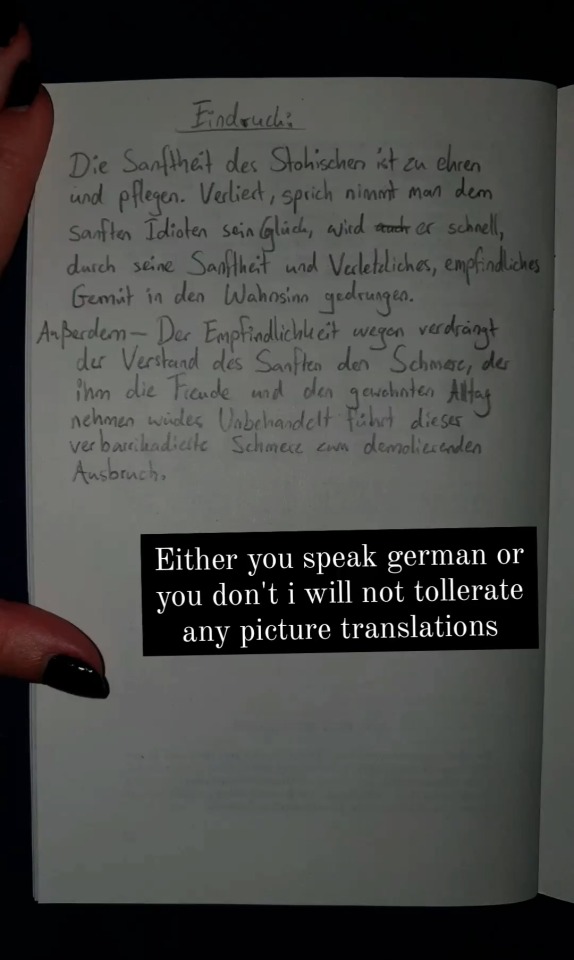
#dark academia#literature#philosophy#book analysis#well its a romance epoch novella with 30 din a5 pages#old too#scribbles with misspellings make it more soulful ok#german writing#handwritten
2 notes
·
View notes
Text
now that i’m like done with highschool btw i have decided to finally post my karl rossmann x felix krull fanart. idk where that idea even came from lol

i think if u know the characters, its obvious who’s who, but if you don’t; the left one is karl and the right one is felix lul
#yes i made ship crossover fanart of two main characters from two old german classic literature books#even tho i never even finished reading the second one#school#karl rossmann#felix krull#moi#fandoms#…not really but my tag system is rigid so yk#my art
2 notes
·
View notes
Text
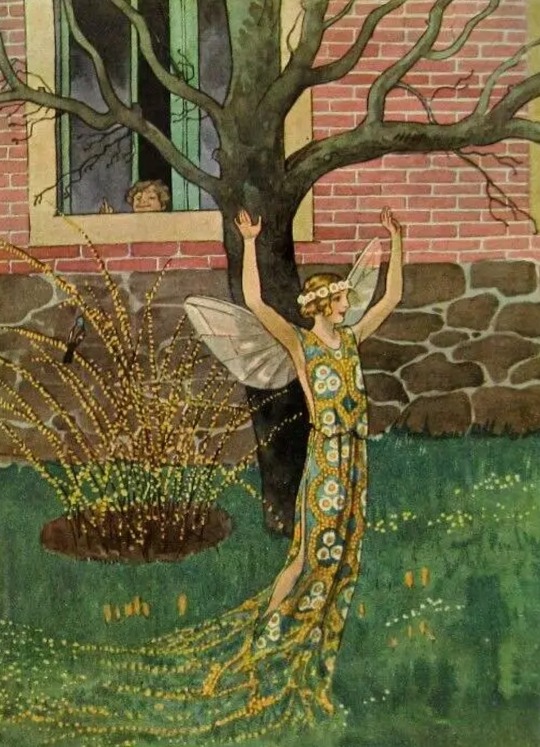
Das goldene Osterei
Ein Märchen-Bilderbuch von Margarete Thiele
Union Deutsche Verlagsgesellschaft
Stuttgart - Berlin - Leipzig
C. 1920/30
Artist : Artus Scheiner
#elf#elfe#children's literature#children's illustration#fairy tale#children's books#vintage illustration#fairy story#children's book#fairy tales#old illustration#fairy#german book#german y#margarete thiele#artus scheiner#the golden egg#l’œuf d’or
85 notes
·
View notes
Text
Three Comrades Movie
youtube
Well, I loved this book to death and cried a bunch while reading it and I had no idea there was a movie version of it. I watched it recently and all the feelings came back like a truck hitting me. I liked it a lot it was a good adaptation. I adored Pat and Koster’s relationship in this movie. Koster was just so sweet here, he was the MVP. So for anyone who loves this book and wants to watch it here you go!
3 notes
·
View notes
Text

Reading this masterpiece, translated by #constance garnett
#constance garnett#romanticism#book recs classic#book recs#literature#classic literature#book photography#book blog#french literature#austrian literature#russian literature#french#napoleon#war and peace#leo tolstoy#light academia#books & libraries#college life#booklr#book review#classic#english literature#german literature#audrey hepburn#napoléon#old books#french romanticism#old romance#used books#dark academia
12 notes
·
View notes
Text
Not stonks for Thorkelin
The Germanic Philology Diary, vol. 1
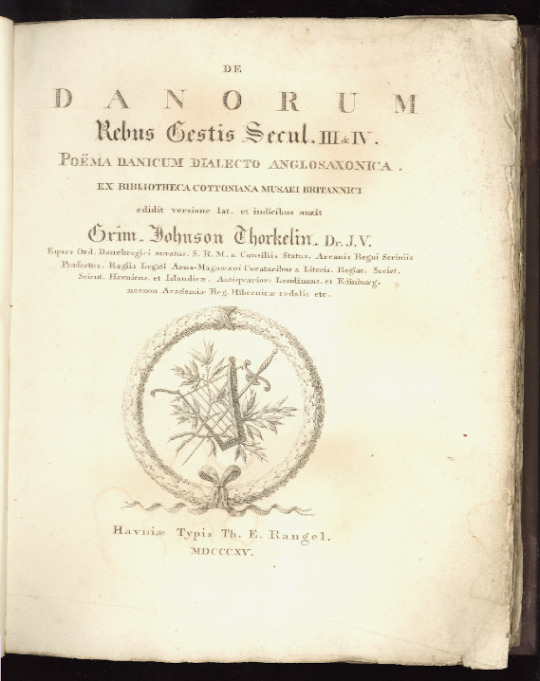
I decided that I would create a little format on this blog. Turns out that I know a shit ton of curiosities and fun facts about history and literature, in particular regarding Germanic Philology — the field that studies Germanic Medieval texts.
Today, while researching for my thesis, I discovered a little story that I thought some of you might like. It's about the first ever Latin translation of Beowulf, aka the Bible of philologists. It's a thrilling, funny but tragic story that involves an Icelandic scholar, bombings and fires.
So, my thesis is on Sir Walter Scott and Old Norse mythology (simplified). While reading some of his letters, I encountered one that he sent to a friend on August 9th, 1810.
These [volumes Scott bought] with some others & with what I had before make me strong in Northern antiquities which the Bombardment of Copenhagen in which Thorkelin's library perishd has renderd scarce.
Apart from the fact that Scott is totally bragging in this passage, my first thought when reading this was "Hold on, Walter...what do you mean with Bombardment of Copenhagen??"
Of course, being the little rat that I am, I had to find out more. Turns out that the British bombarded Copenhagen in 1807, during the Napoleonic Wars. Most of the city was destroyed in the fires that followed.
Grímur Jónsson Thorkelin, an Icelandic scholar, lived in Copenhagen. At this point, he had spent 20 years working on the first ever translation in Latin (and German) of the Old English poem Beowulf. He even lived in England for years in order to study the original manuscript, after the only copy existing of the poem was damaged in a fire a few years before. He was a living legend for scholars of the time.
In his personal library, which contained many Old Norse texts, including sagas, copies of the Eddas and scaldic poetry, he kept the final transcript and editorial notes of the translation. As he himself put it in the 1815's edition of the translation, he just had time to save the first drafts of the translation before his house collapsed in the fire.
Now imagine this. It's 1807, the books you so avidly collected in your library are extremely rare and difficult to find. You probably travelled a lot to find them, and spent a fortune to buy them. Moreover, the work of your life, the work that is literally paying your rent because it was commissioned by the Government is forever lost in the fire that followed a fucking bombardment. Not stonks for you, my friend. However, this idiot had the courage to look at his manuscript translations and thought "Mh, okay. Imma just do it again".
And he fucking did.
Yes, his translation is nowadays considered shit. Most of the translations of the time of literally anything are considered shit. They were trying to translate everything into Latin, and then used the Latin translation to do other translations, instead of consulting the original. So yeah, it was shit. But he still put the effort in that translation. And he was the first to do it.
So yeah, not stonks for Thorkelin. But still. Kudos for Thorkelin, I guess?
And, for the love of everything holy, please Walter...stop bragging.
#the germanic philology diary#history#literature#old english#beowulf#dark academia#academia#university#studying#dark academia study#studyblr#study blog#medievalism#medieval history#culture#books and literature#old norse#old norse mythology
1 note
·
View note
Text
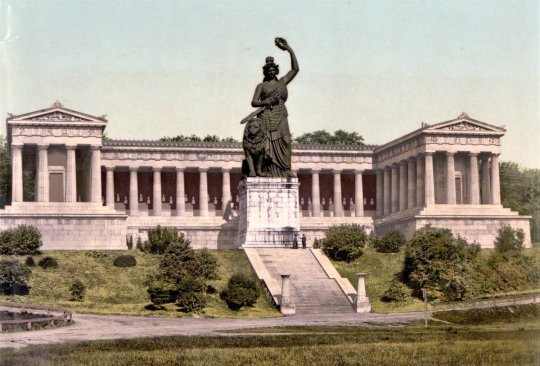
Munich, German Empire (c. 1890)
#dark academia#light academia#classical#academia aesthetic#academia#escapism#books and libraries#classic literature#books#architecture#historical#building#old#munich#german empire#deutschland#bavaria#old photograph#1800s#19th century#royalcore#cottagecore#aesthetics#mood#vibe#style#antique#vintage
39 notes
·
View notes